In Africa, lions, leopards, rhinos, buffalos, and elephants are the Big Five game animals. These iconic species are often at the top of many safari-goers must-see lists. But did you know that Scotland also has a Big Five? In 2013 – the Year of Natural Scotland – VisitScotland and NatureScot (then Scottish Natural Heritage) created ‘Scotland’s Big 5’ to showcase the nation’s most-loved native wildlife species: the harbour seal, otter, red squirrel, red deer, and golden eagle. The aim was to encourage people across Scotland to enjoy watching these animals in their natural environment. That is easier said than done, though, as all five species live in varying habitats across the country. So, where better to see ‘Scotland’s Big 5’ than on a miniature Scotland?
The Isle of Arran is an hour ferry ride from the Scottish mainland but feels like a world away from a busy city like Glasgow. The island is known as a great place to watch wildlife and is home to all of the ‘Big 5’. With towering hills, stunning coastline and secluded woodlands, it provides ample habitats for abundant animals.
However, we weren’t on a wildlife watching holiday. So, wildlife photography had to fit in with all the other activities we wanted to do and places we wanted to explore during our week on the island. In this blog, I have shared some of our encounters from the island, but I want to point out that you would undoubtedly see more wildlife if you spent all your days on Arran looking for it.
Harbour seal hangouts
Harbour seals are arguably the easiest of ‘Scotland’s Big 5’ to spot on Arran. They haul out on rocks along the shore, and we could see them from the main road that hugs the coast. Harbour seals prefer slightly more sheltered waters than grey seals, so much of the Arran coast is ideal.
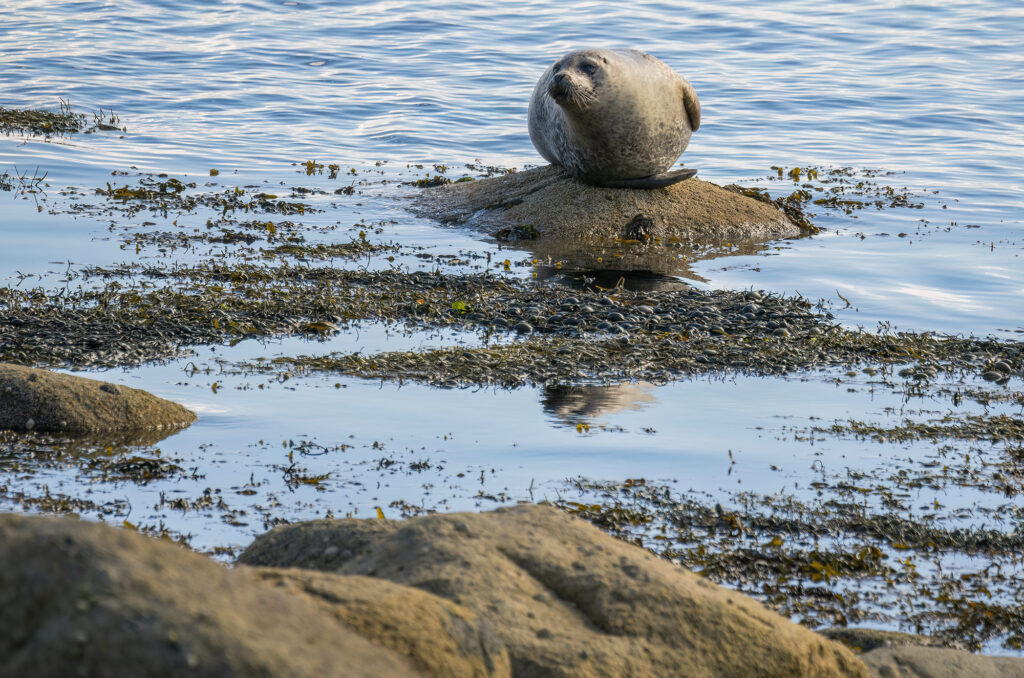
We saw numerous harbour seals during our week on Arran, but our best encounter came from spotting a single seal hauled out on a rock as we drove along the road to Brodick. Thankfully, there are numerous laybys to pull into if something catches your eye, and we could stop the car and walk to a place on the roadside where we headed down towards the shore.
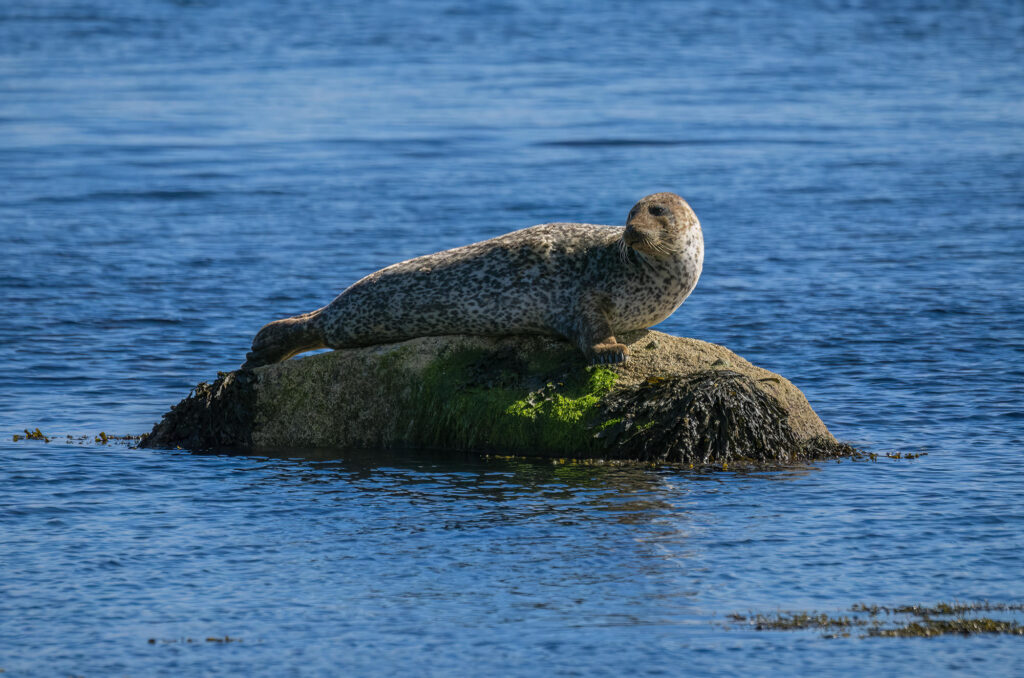
The seal we had spotted from the road soon became three once we got a clear view of the shore. With plenty of large rocks to sit on, we settled down quietly and checked to make sure the seals remained relaxed before I started capturing images. I think relaxed would be an understatement. The seals occasionally glanced in our direction, but it became apparent that they were more concerned with the shouting from the nearby park and the noise from the road behind where we sat.
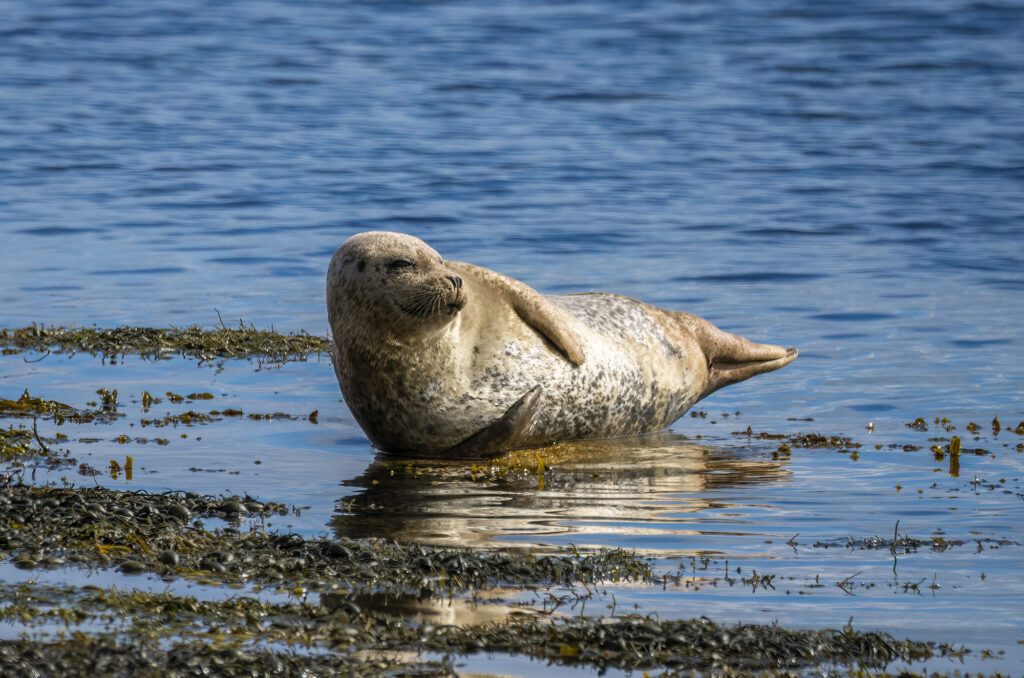
Their eyes were mostly closed, and the only movement was an occasional stretch and bend of their bodies. You could almost see their pleasure as they soaked up the heat. On the other hand, I overheated as the mid-September sun blazed down on the black coat I was wrapped in to keep out the cold from earlier in the day. I didn’t want to move around too much, so I left my coat and jumper on and kept shooting…and sweating.
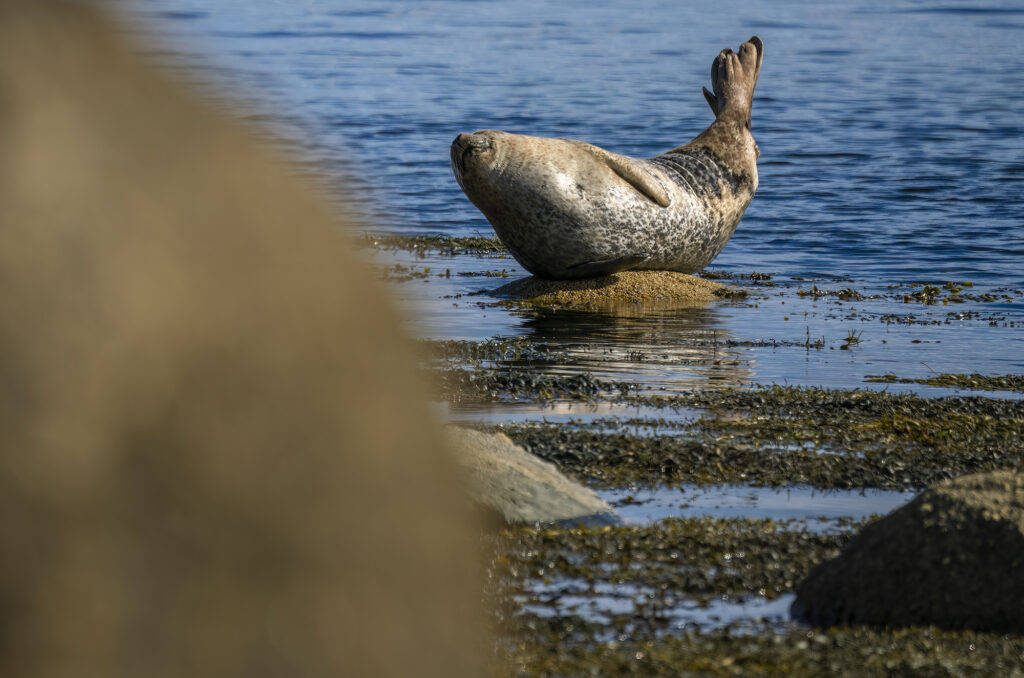
The most action we got from the seals was one individual who looked as comfortable on its rock as I was on mine. Every once in a while, it would bounce up and down to reposition itself, sigh, and settle back down. Some rocks are better than others. At least that seal had one. A fourth seal occasionally popped its head out of the water to see if there were any vacancies on the rocks, but it was out of luck. We watched as the tide rose steadily and left before we thought the seals would head back into the water.
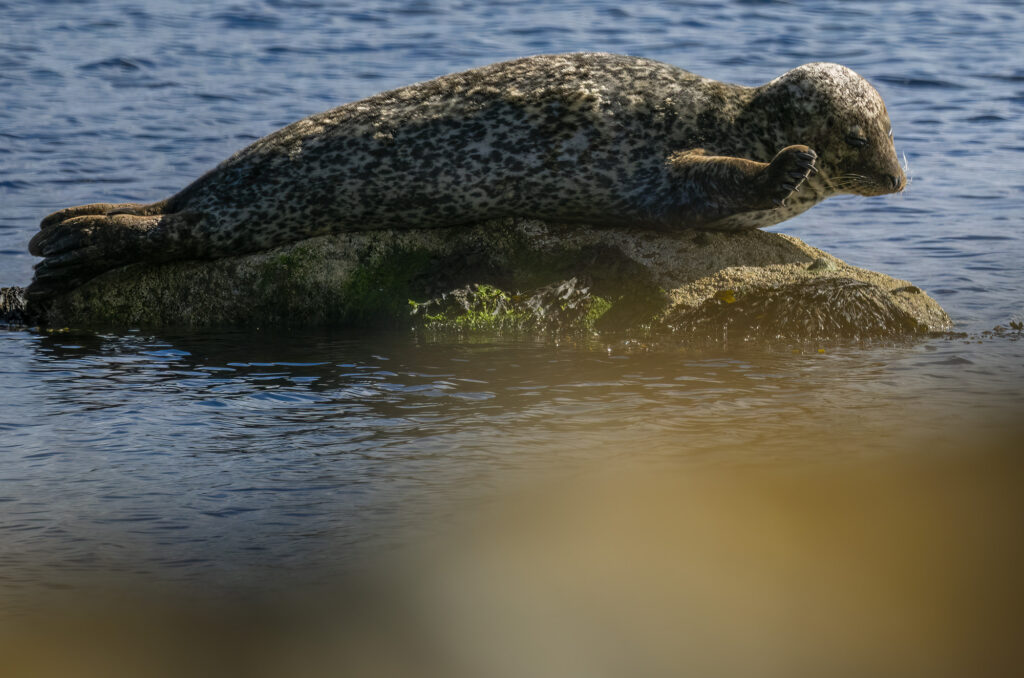
I think it’s important to point out that my partner and I have experience watching seals. We know what we must do to ensure we aren’t disturbing them. If we felt – at any point during the encounter – we were unnerving the seals, we would have left them. No photo is worth disturbing your subject. I hope it is clear from the images that the harbour seals remained relaxed in our company.
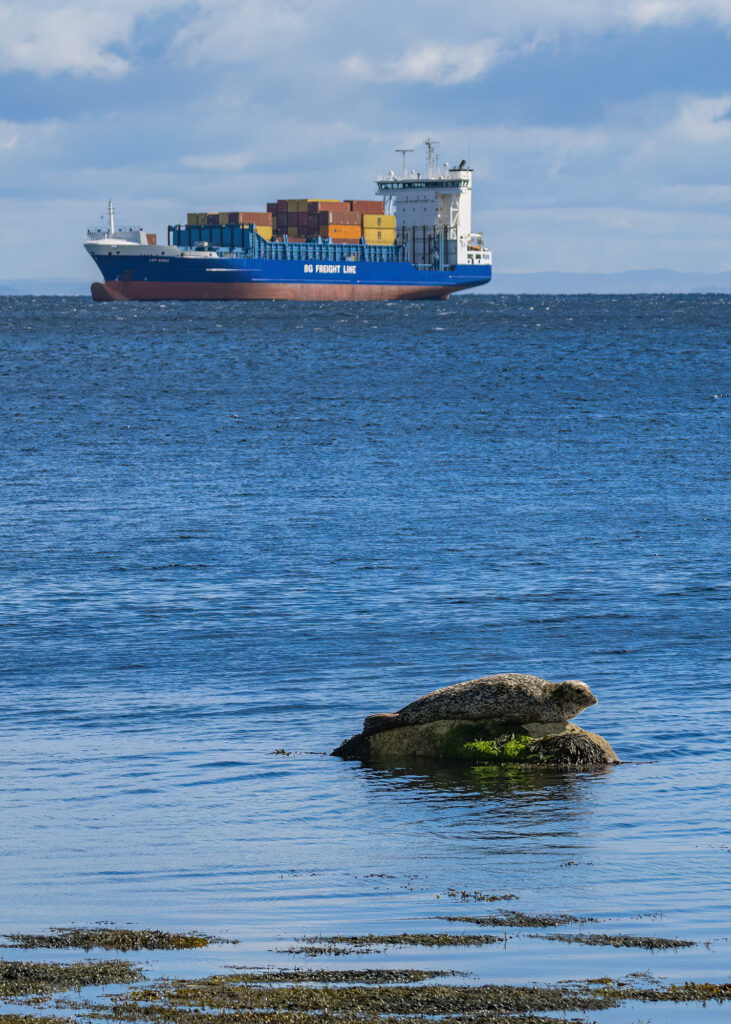
Otter spotter
After we carefully crept away from our seal-watching spot, we decided to check the view further along the coast and returned to our parking spot on the old harbour just outside Brodick. When we got to the car, a friendly gentleman with binoculars quickly informed us that an otter was swimming in the deeper water. He helpfully pointed out where the otter was surfacing. It seemed to be hunting, and we hoped it would be successful and bring its prey towards the shore. But it wasn’t to be. The otter stopped surfacing, and we had no idea where it had gone. The three of us stayed for a while, the expectation that it would suddenly reappear fading on the light breeze until we all admitted defeat. We thanked the otter spotter and wished him luck before we went our separate ways.
The image I captured of this brief encounter is no more than a record shot – heavily cropped and suffering from the reflections bouncing off the water. But it represents my partner’s first otter sighting and our first time seeing one together. I hope there will be more.
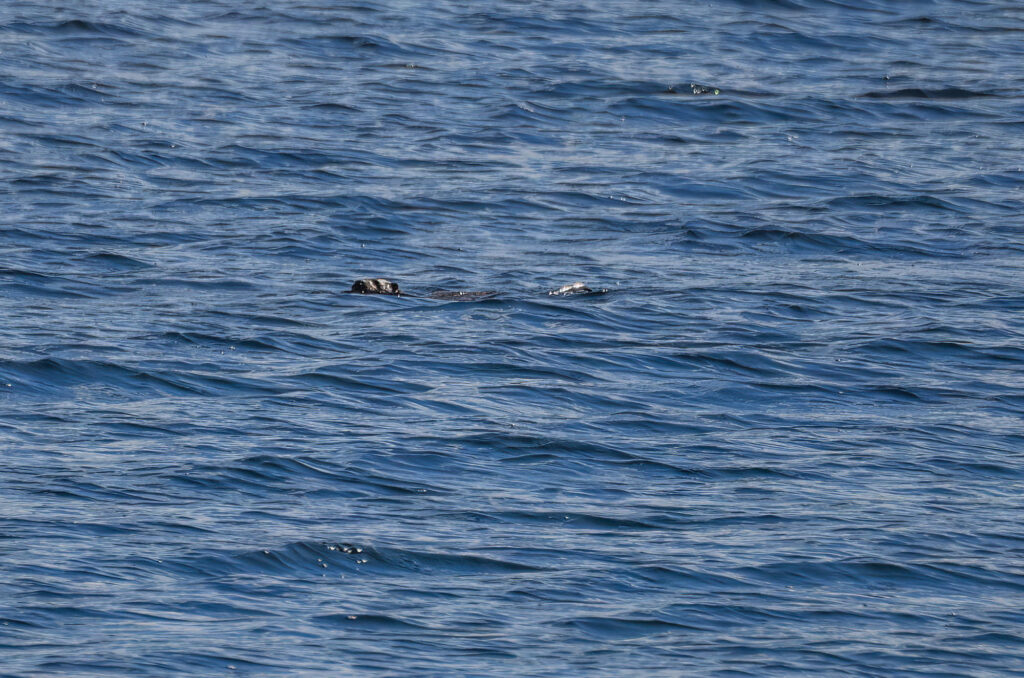
Getting closer views of otters on Arran wouldn’t be too tricky. Plenty of locations along the coastline looked perfect, and if you settled down in the right spot during calm conditions, timed it with the tides and just waited, you’d stand a great chance.
Red redemption
We arrived at Brodick Castle later than we planned. We hadn’t expected to spend so long with the harbour seals and hadn’t factored in a surprise otter encounter. So, by the time we were strolling down to the red squirrel hide in the castle grounds, it was late afternoon.
The hot sun that warmed us while we watched wildlife at the coast was lost as soon as we entered the dense woodland area. The temperature dropped rapidly. It wasn’t long before raindrops replaced the dappled sunlight breaking through the canopy. Cool gusts echoed the strong winds from the previous day, which had forced the National Trust to close the Castle. But we sat in the hide, just the two of us, and stubbornly waited. And then we waited some more.
Forty minutes passed, and while we’d seen plenty of chaffinches and a pheasant, it was hard to ignore how late in the day it was and how cold it had got just sitting there in the shadows. I suggested leaving, as we still had the castle to visit, and it wasn’t long until closing time. As I put my camera into my bag and stood up to go, a red squirrel ran out in front of the hide. I cursed under my breath while trying to pull my camera back out of the bag as quickly and quietly as possible. I captured three shots of it on the feeder before it scurried up a tree. Silently swearing to myself for putting my camera away in the first place, we settled back down to see if it would return.
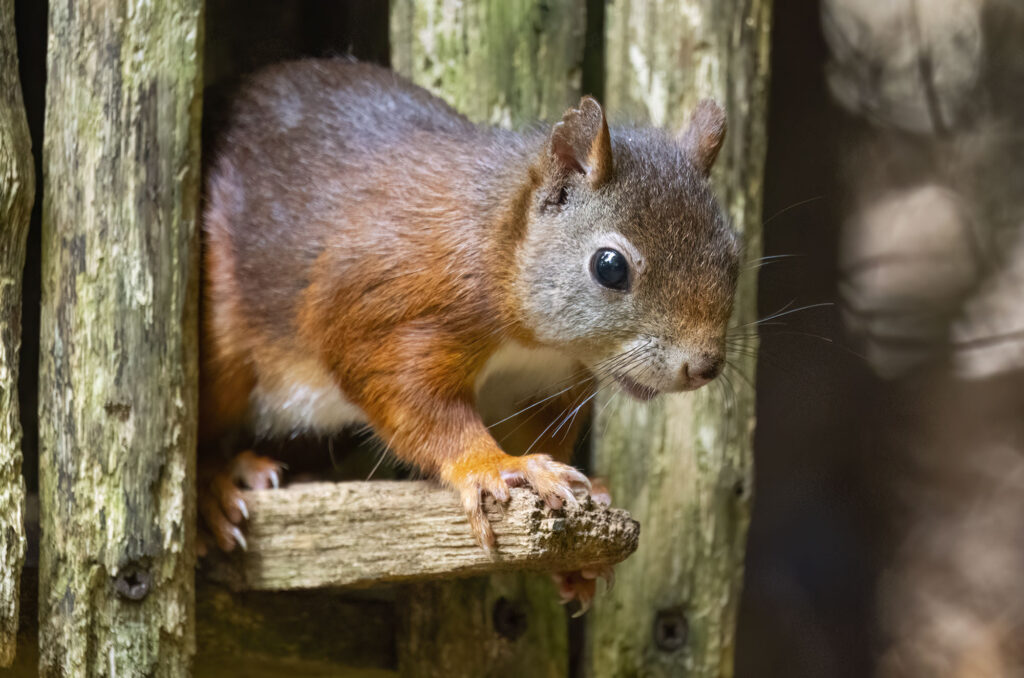
As we held our breath, footsteps approached on the boardwalk outside – many heavy footsteps. There was loud chattering, and the door opened behind us, then closed again. There were urgent whispers and instructions. The door opened again, some children entered and sat down. We quickly realised more waited outside and decided that our time in the hide was up. I hope the kids settled quickly and the squirrel returned for them, although I’m not sure it would have been encouraged by all that noise and movement.
Brodick Castle was the ideal location for us to try to photograph red squirrels on the island, as we were time-limited. But they can pop up all over Arran – including, briefly, in the garden of our rented accommodation.
The strut before the rut
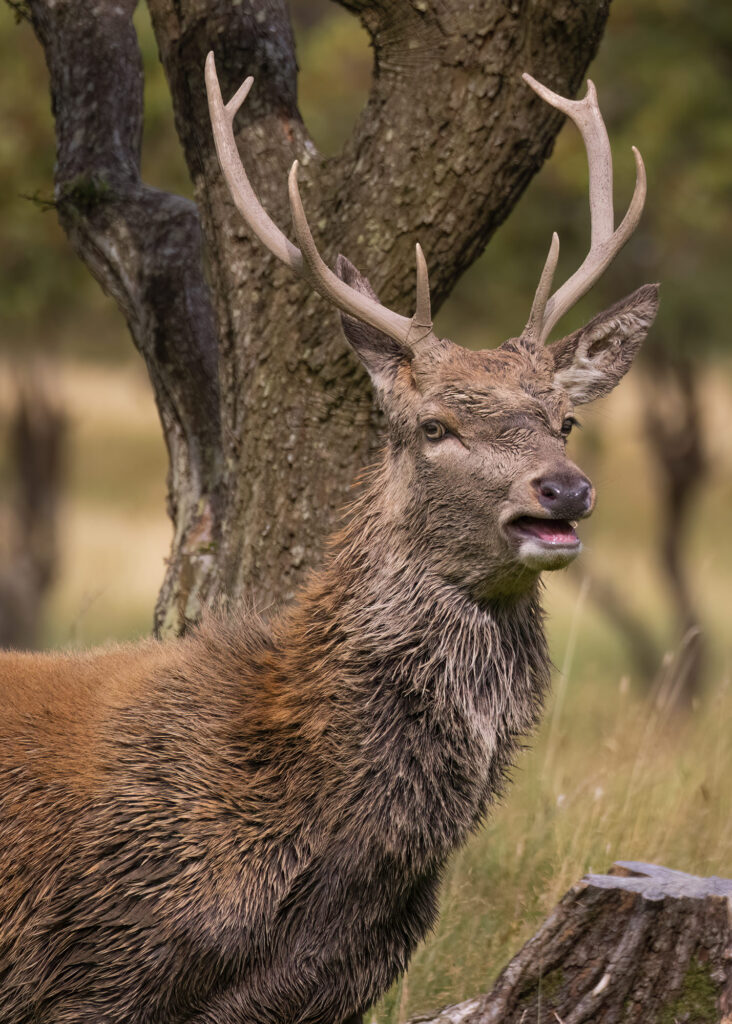
Our first visit to Lochranza was on our first full day on Arran. The weather was damp and grey, and while it was a beautiful place with the coastal landscape and ruined castle, I couldn’t get inspired. I scoured the horizon for wildlife, but the most exciting encounter happened when a gannet flew past my partner while I was in the toilet. It just felt a bit bleak.
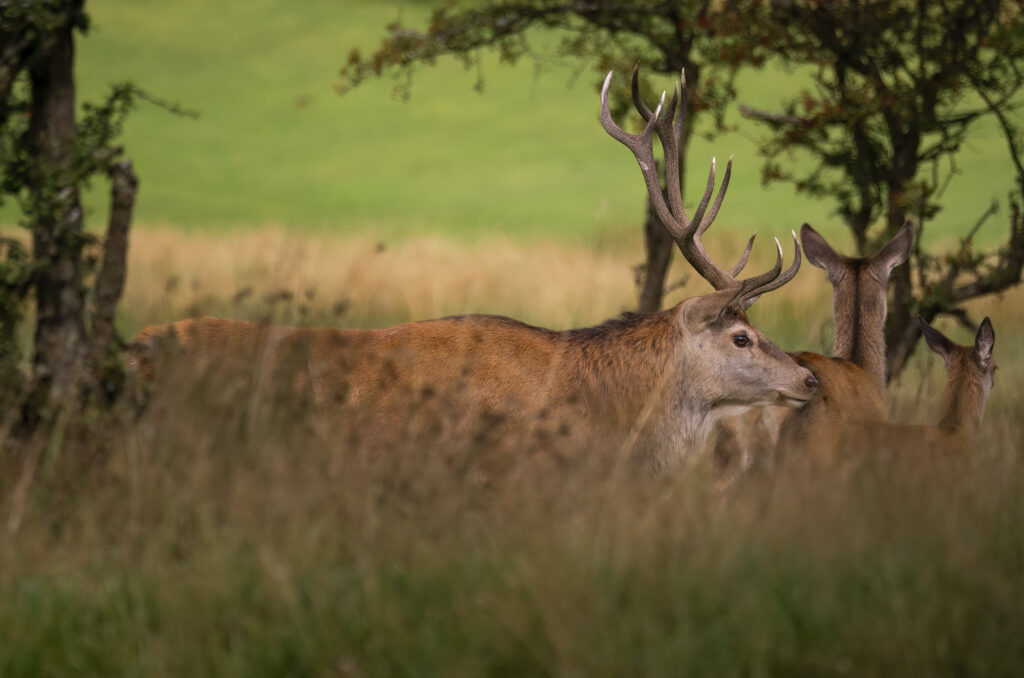
Fast forward to our last full day on Arran, and the weather had brightened up. As we entered Lochranza, a road full of sheep greeted us, meandering their way to wherever they wanted. As we slowed to a crawl to let the flock sort itself out, I noticed red deer on the golf course. We parked up and headed over to where the deer were, keeping the burn between us and them to ensure we were watching them from a respectable distance.
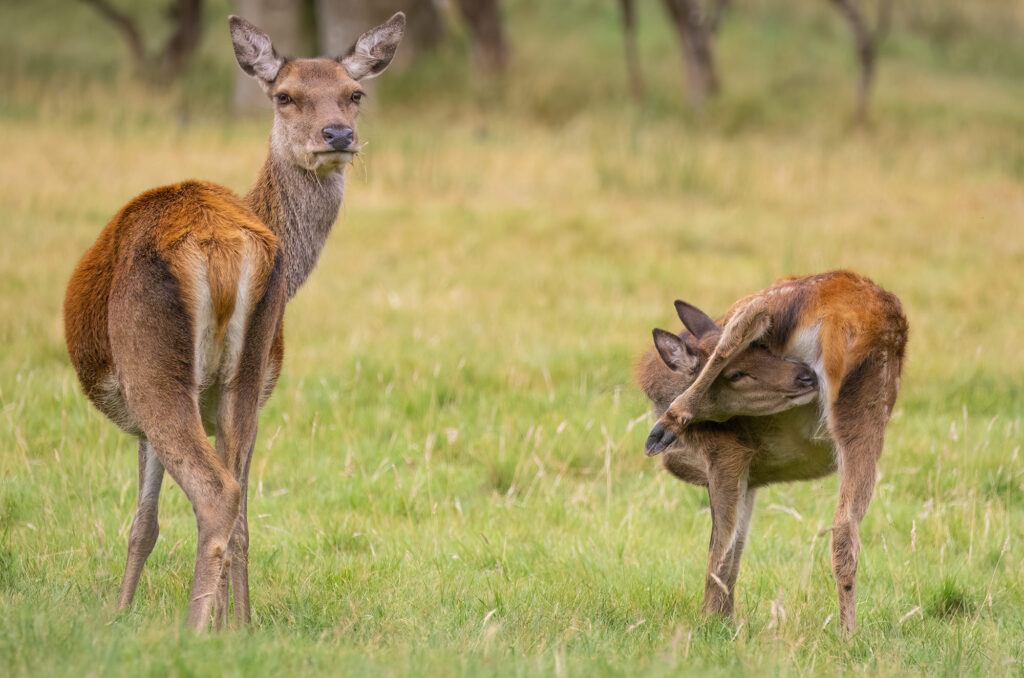
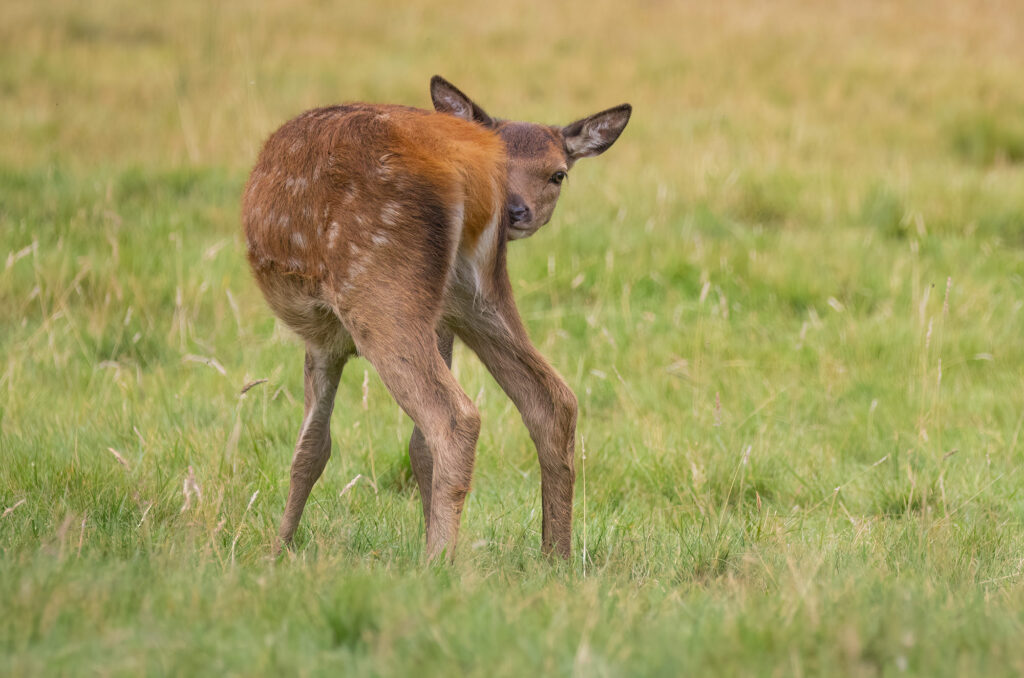
What first looked like a peaceful scene of hinds and calves grazing in the sun quickly turned into a pre-rut spectacle. A young, brown stag ran into view and began strutting his stuff in front of the nearby hinds.
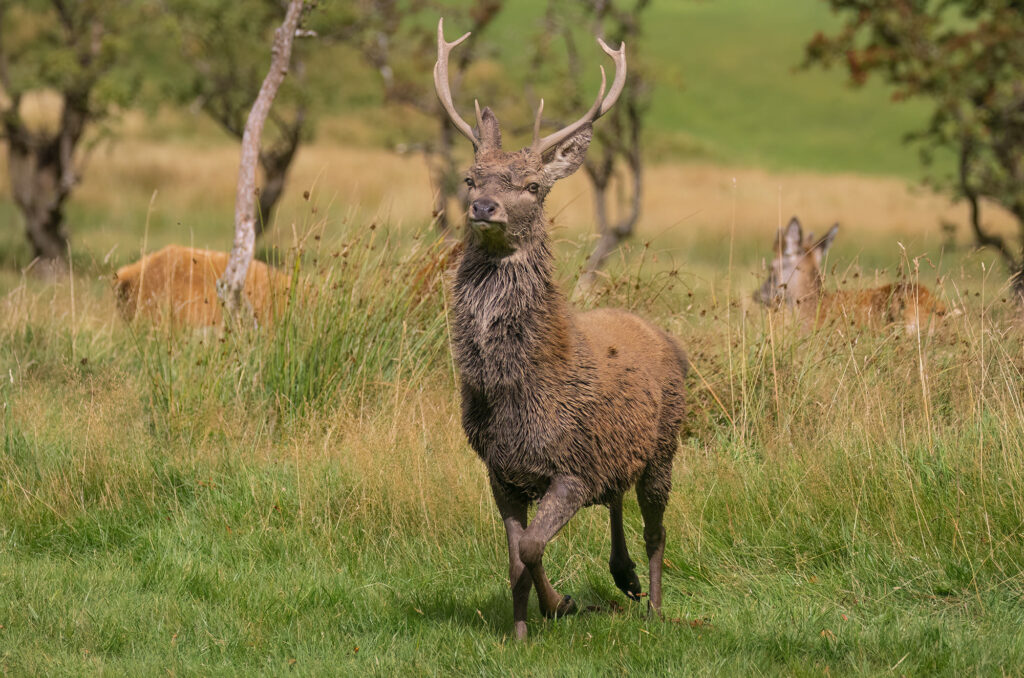
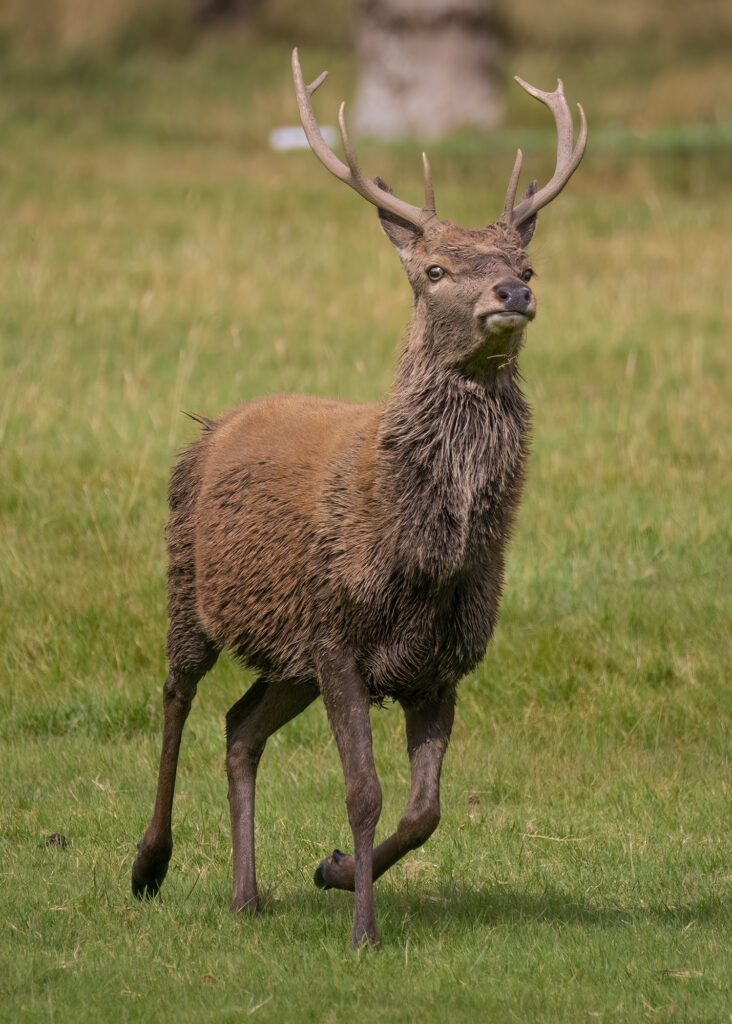
His display was undeniably showy. Head thrown back, he trotted and cantered large circles around his female audience. Unfortunately for him, the hinds barely glanced in his direction, although the odd calf gave him a bemused look.
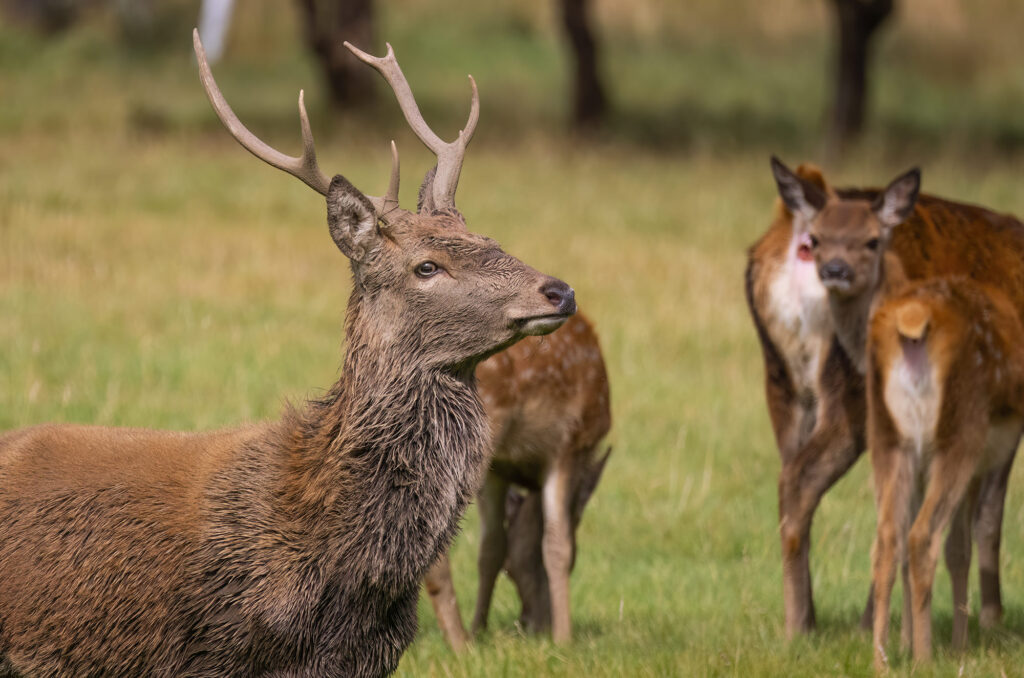
While the females hadn’t noticed, the other stag had. There was no mistaking; this was his harem. He patrolled his hinds but without a sense of urgency. Yes, this was still early in the rutting season, so we weren’t expecting any clashes of antlers. But it was also clear that the dominant male didn’t see the young stag’s exuberance as much of a threat.
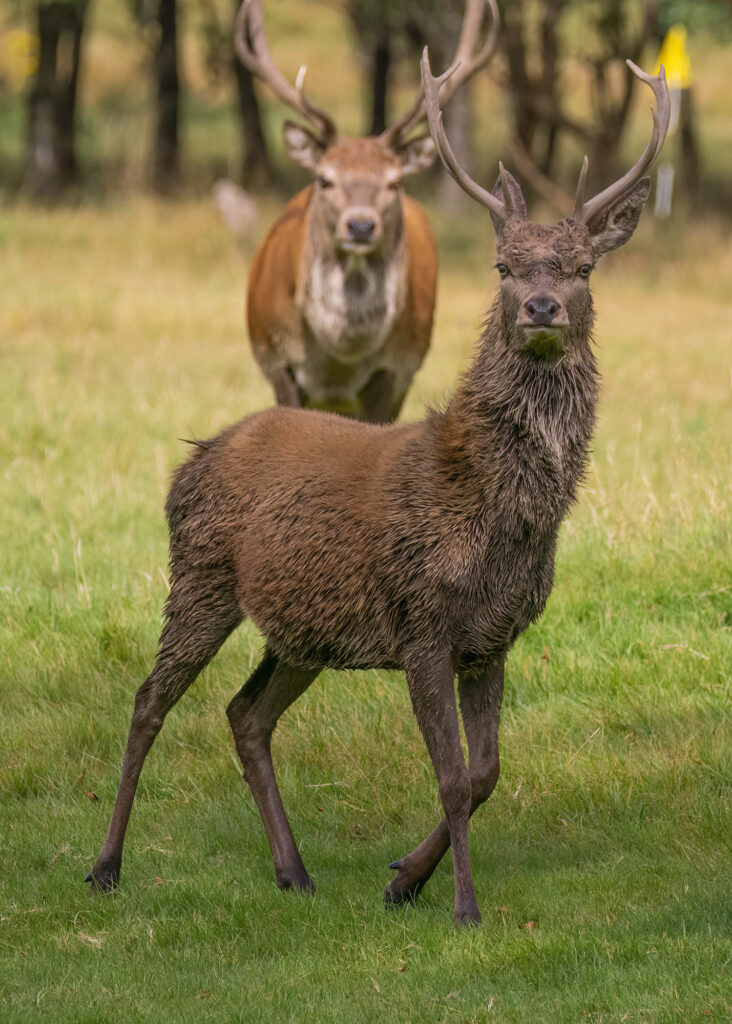
After the youngster had given the ladies his best moves for some minutes, a few bellows and a confident march towards him by the mature male seemed to settle the issue and the pretender to the throne trotted away. He remained nearby but wandered about grazing, his initial burst of energy seemingly tapped.
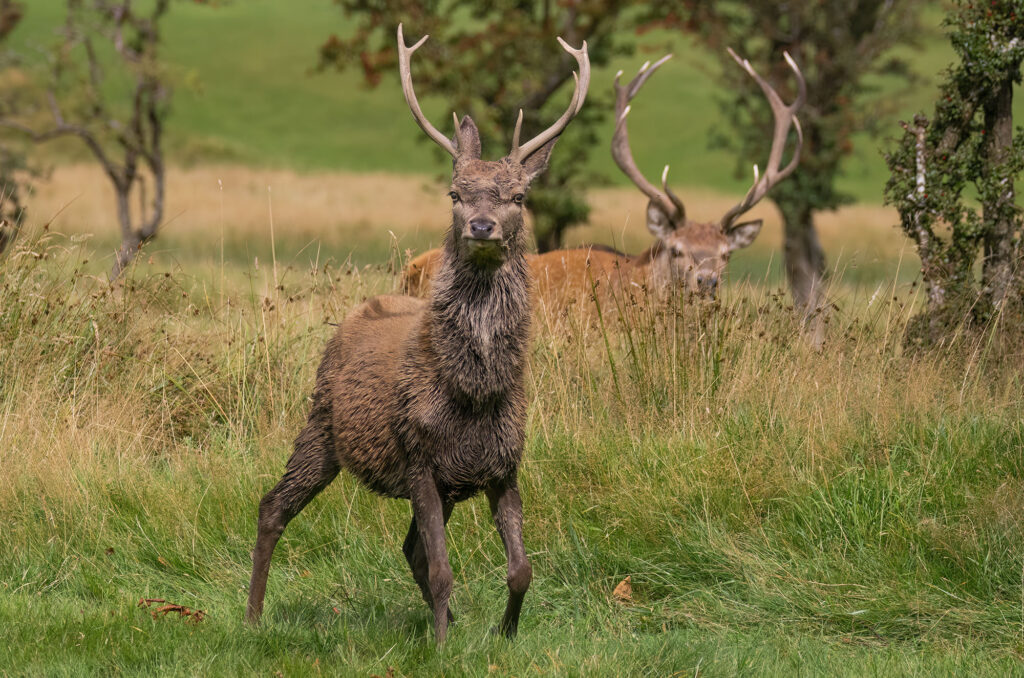
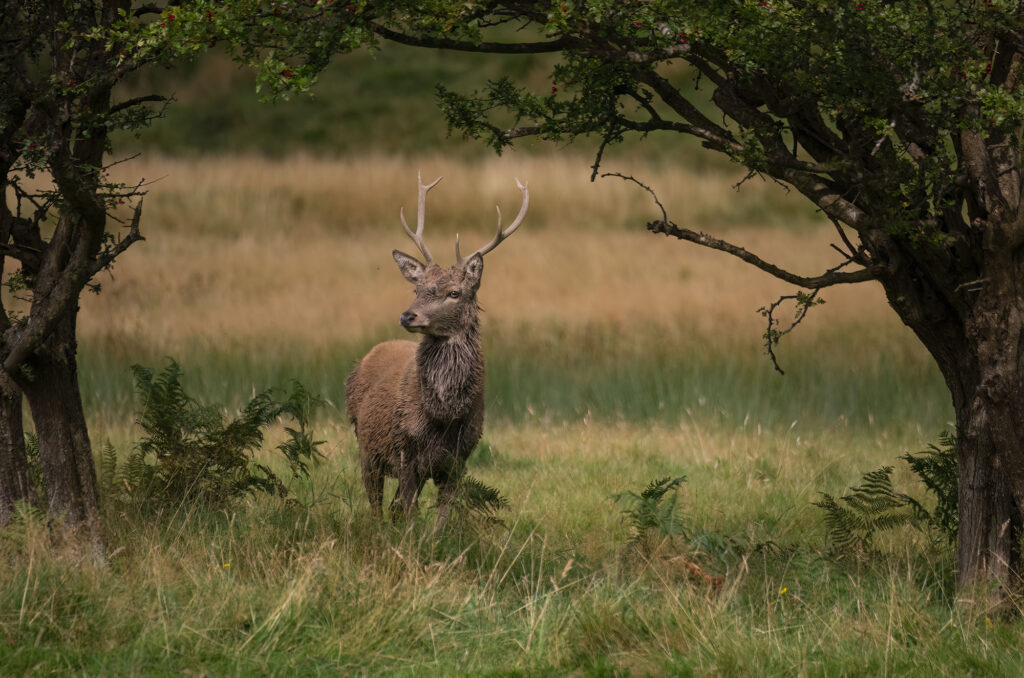
The dominant stag then tended to one hind, which was fascinating to watch. He bellowed and, when she settled on the ground, nuzzled and groomed her. It had been a long time since I last closely watched red deer in Richmond Park when I first started photographing wildlife, so I wasn’t sure I trusted my memories, but I couldn’t remember witnessing this tenderness between a stag and his hinds before.
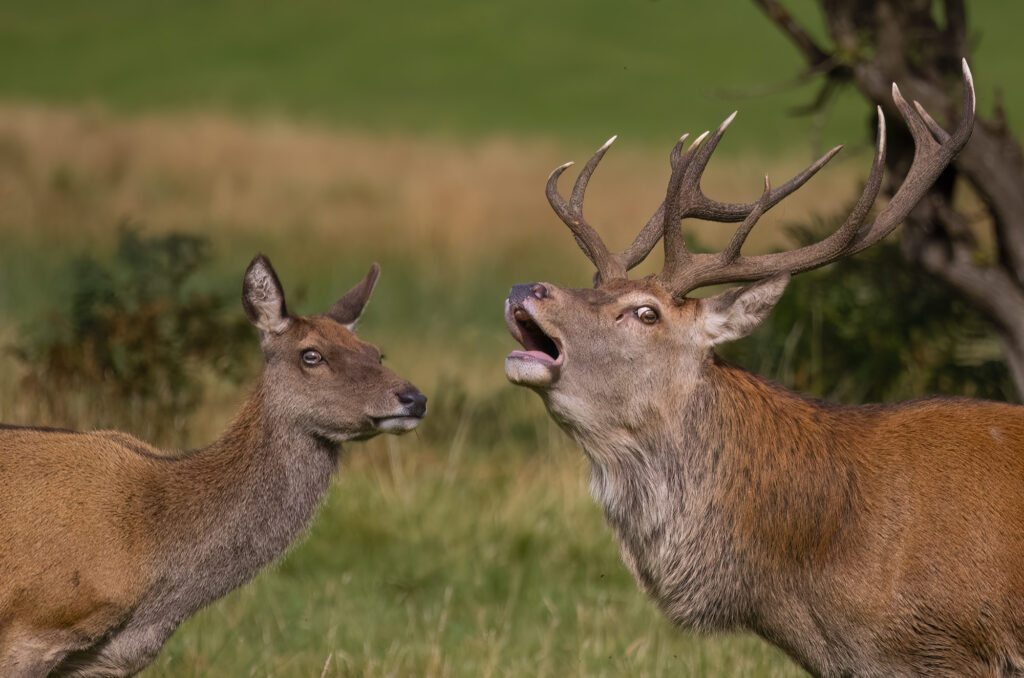
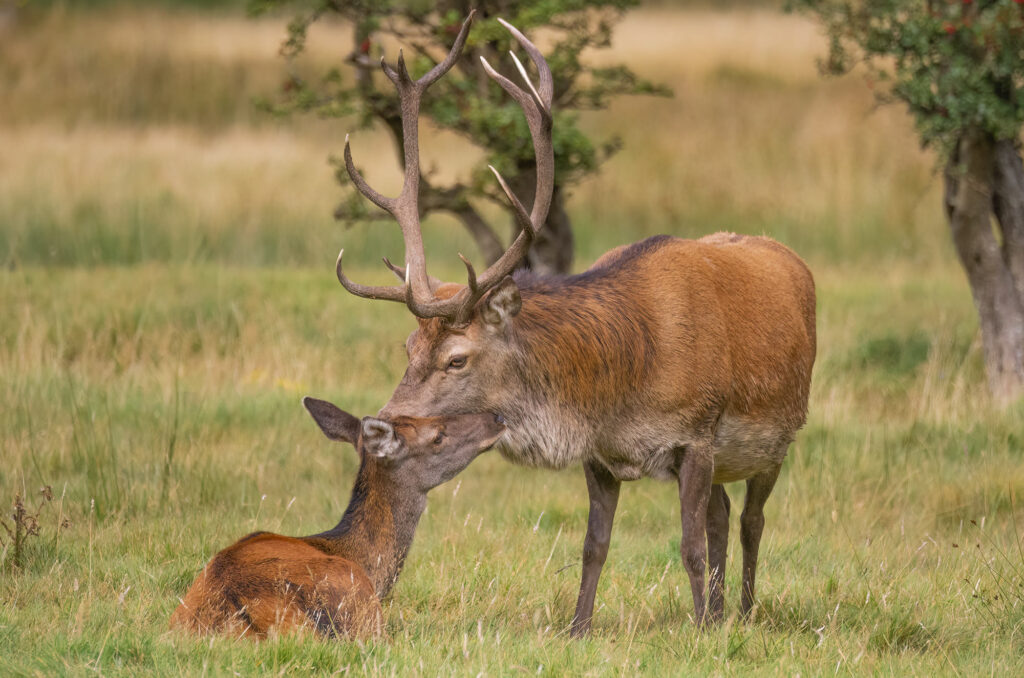
After this attention, he stretched out on the ground and scratched his back with his long antlers. I counted twelve tines (or points) on his antlers, marking him as a Royal stag – 14 points make an Imperial stag, while an animal with 16 points or more is a Monarch. It was a pleasure to watch this magnificent animal relax. It felt like the calm before the rutting storm, and we chose to move away quietly while the herd were at peace again.
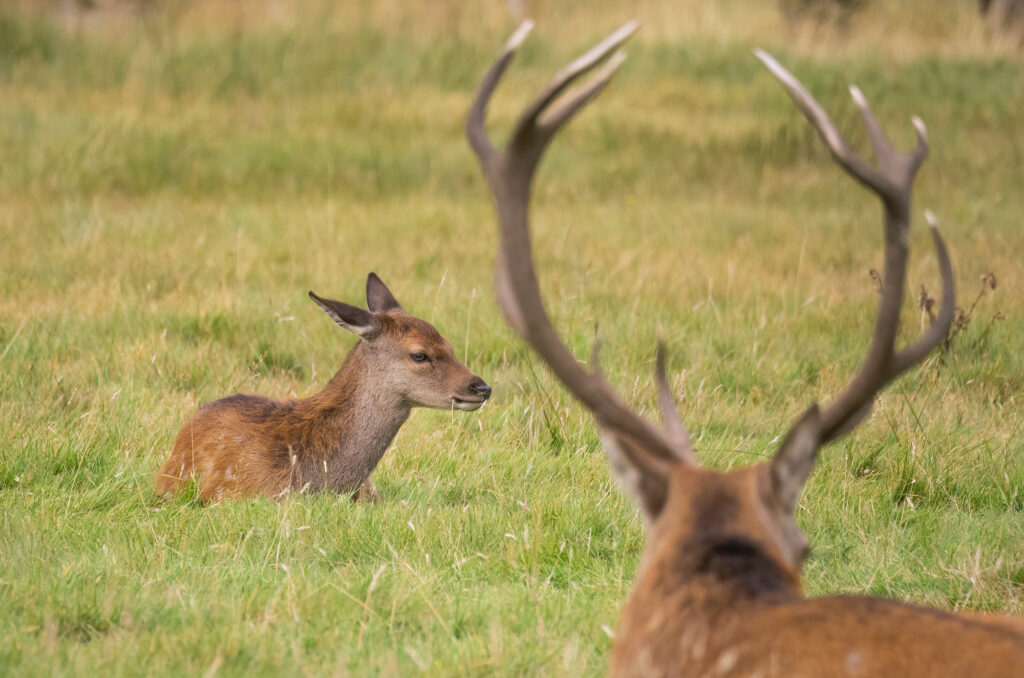
A golden opportunity missed?
While we watched the skies closely as we walked the low-level paths on the island, such as to the Blue Pool in Glen Rosa, we didn’t spot a golden eagle. I didn’t expect us to see one, to be honest. I am no hill-walker and felt we wouldn’t stand much chance of spotting one unless we headed up into the mountains.
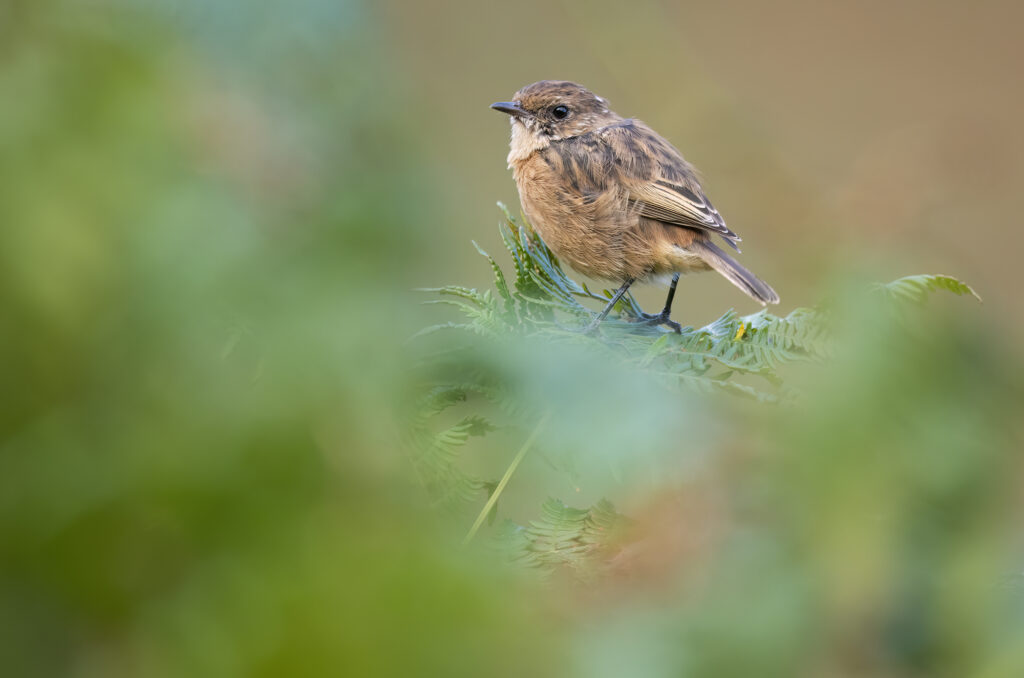
But there is plenty more than that to see on Arran. I was delighted to have my first opportunities to photograph hooded crows. As a corvid lover, these charismatic black and silver birds were a big tick on my must-see list.
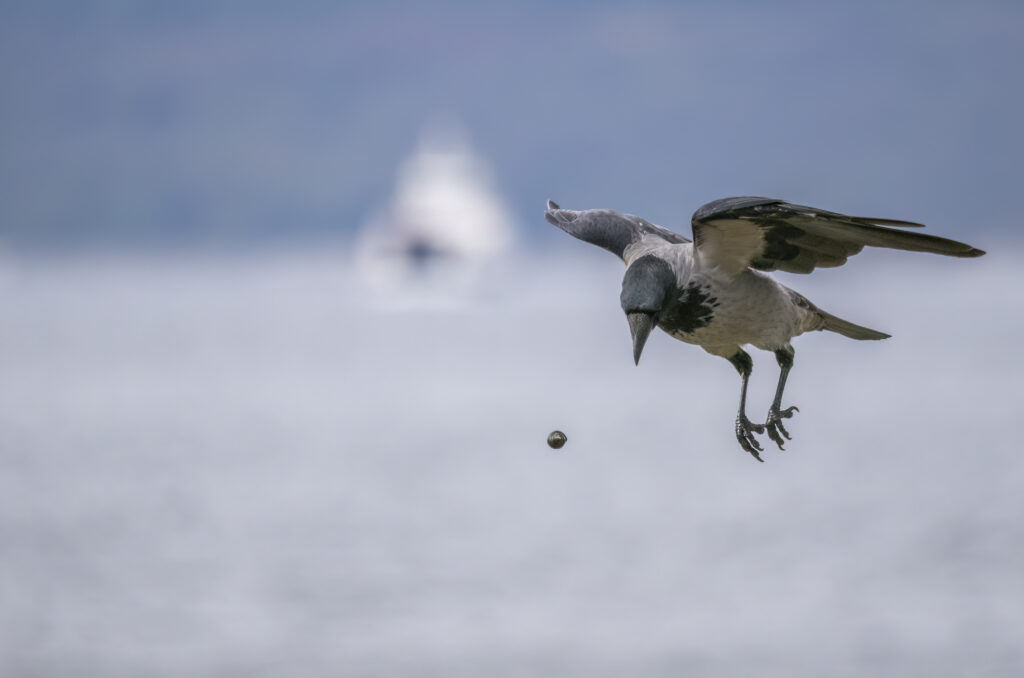
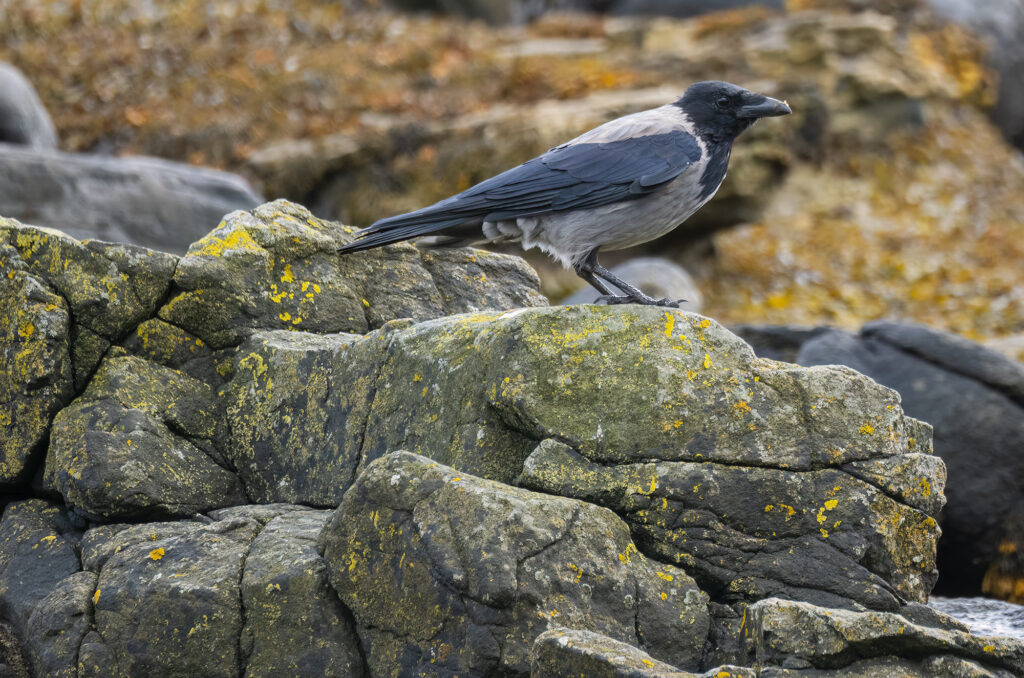
I would also recommend Arran for photographing gannets from the shore. Forty thousand pairs of these birds nest on Ailsa Craig, a tiny granite island near the mouth of the Firth of Clyde, and many fish along the Arran coast. It was a daily treat to be able to watch them from the window of our rented cottage in Corrie.
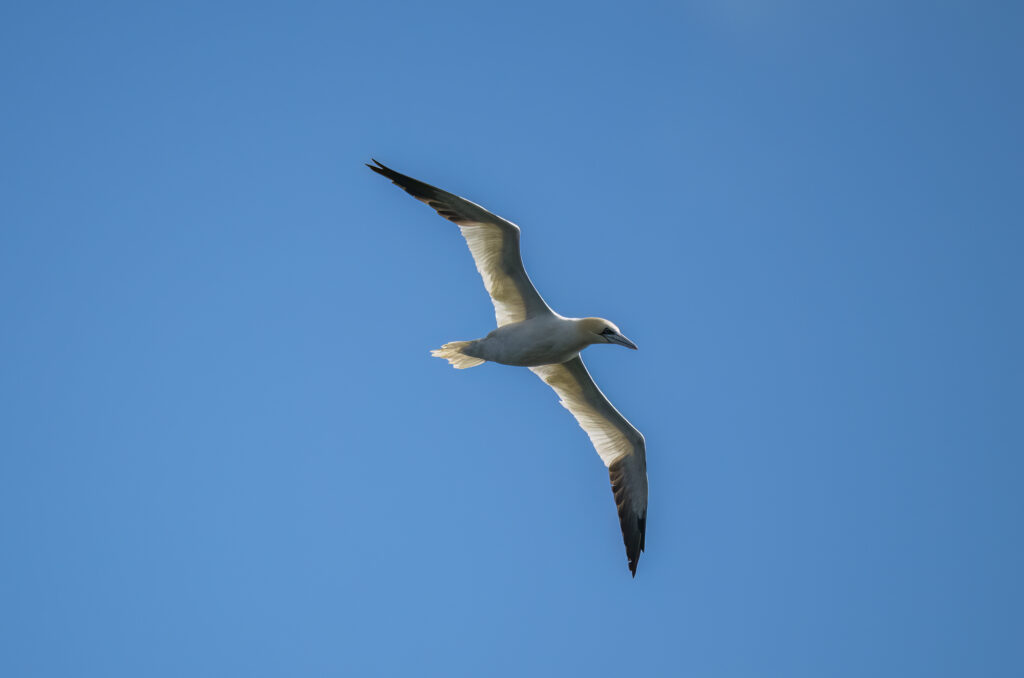
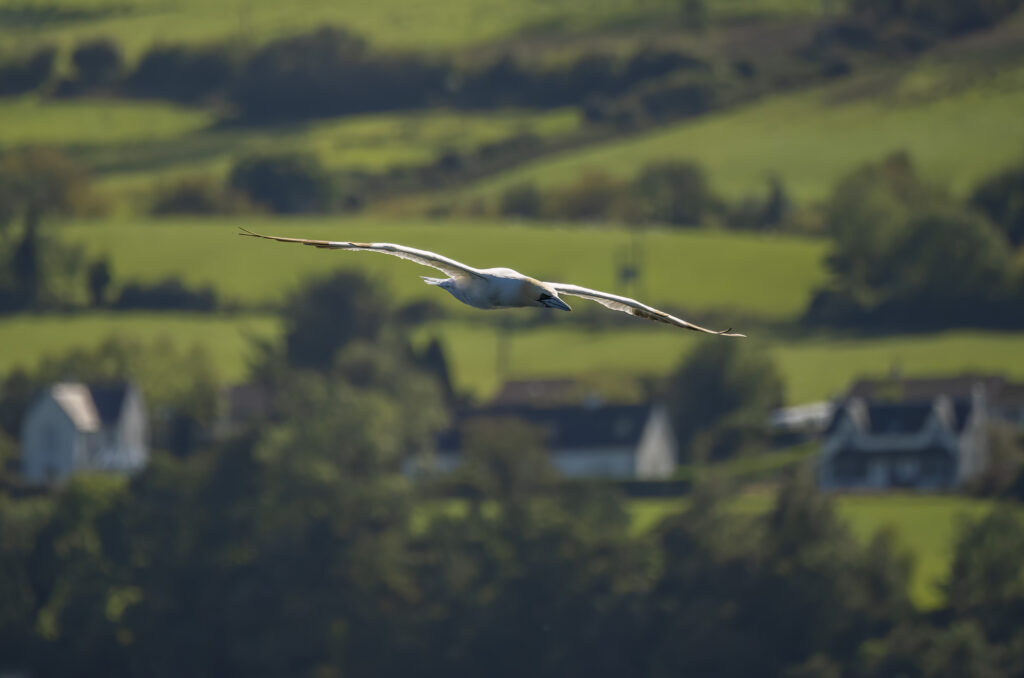
So, we only managed to see four out of five of ‘Scotland’s Big 5’, but we’d had a trip full of wildlife encounters and natural spectacles. I would revisit Arran at any time of the year (ferries permitting!), as we only scratched the surface of what this breathtaking island has to offer.

